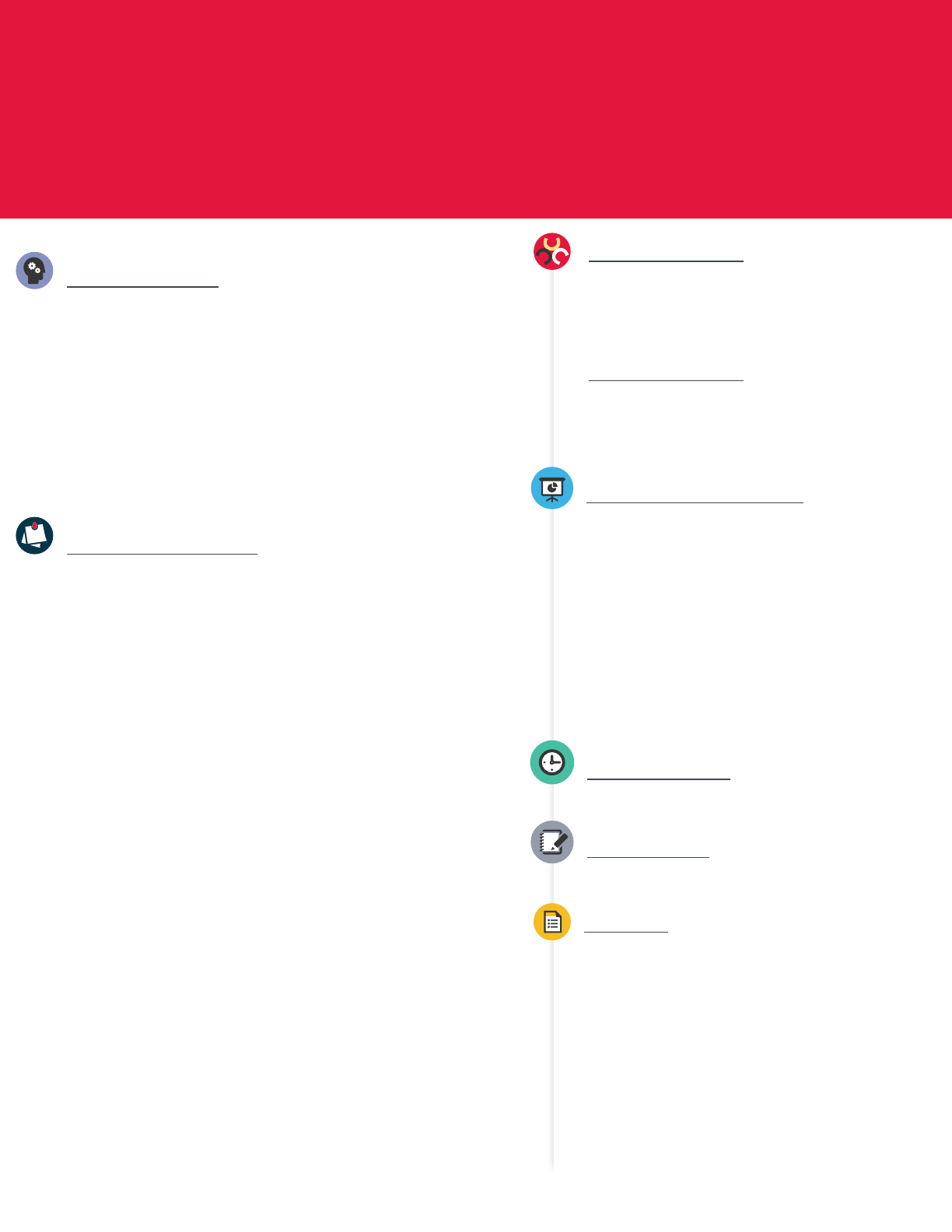
Documentation Skills for Community Health Workers
INSTRUCTIONS
1. Before the session, review the PowerPoint slides and
handouts. This section is divided into two parts:
§ Learning how to write effective case notes, including
the SOAP note approach for documentation
§ Critiquing case notes and practicing writing a
SOAPnote
2. Review the objectives and introduce the topic (slide 2).
3. Review the slides on why documentation is important,
challenges of documenting work, observational skills,
what CHWs bring to the process, and important points
about case notes. Facilitate discussion throughout as
indicated in slide notes (slides 3–12).
4. How to write effective case notes and SOAP note
format
§ Explain that a helpful method for documenting our
work is the SOAP note format.
§ Distribute the handouts on SOAP notes. Ask a
volunteer to read what each letter stands for and the
examples.
§ Review the slides about the content that should
be included in the notes and facilitate discussion
(slides13–18).
§ Refer to the “Do’s and Don’ts” section on the SOAP
Note Definitions and Examples handout.
§ Review slides about other considerations when writing
case notes, time management, and charting goals
(slides 19–24).
Method(s) of Instruction
OBJECTIVES
At the end of this unit, participants will be able to:
§ Create documentation using the SOAP note format
§ Identify the purpose and common elements of good
casenotes
§ Identify the challenges associated with completing case
notes in an effective manner
§ Identify best practices and what you as a CHW bring to
theprocess
§ Practice writing a progress note based on a case study
Related C3 Roles
Care coordination, case management,
and systems; providing direct service;
implementing individual and community
assessments
Related C3 Skills
Communication skills, service coordination
and navigation skills, capacity building skills,
individual and community assessment skills
60 minutes
Lecture, group discussion
Facilitator’s note: Both CHWs and supervisors
should attend this session. Participants could
be trained together or separately.
This session can also be conducted virtually
as a webinar. It can easily be adapted if you
have a platform such as Zoom or Skype and
participants have access to a computer. If
conducting as a webinar, allow 10 minutes
to test the technology and aid participants in
connecting.
Estimated time
Documentation, SOAP notes, case notes
Key Concepts
A Training Curriculum for Community Health Workers | Core Competencies
Materials
§ Computer with internet access and
projector
§ PowerPoint slides
§ Flip chart
§ Markers
Handouts
§ SOAP Notes
§ SOAP Definitions and Examples
§ Example of a Better Case Note
§ Blank SOAP Note
(continued)
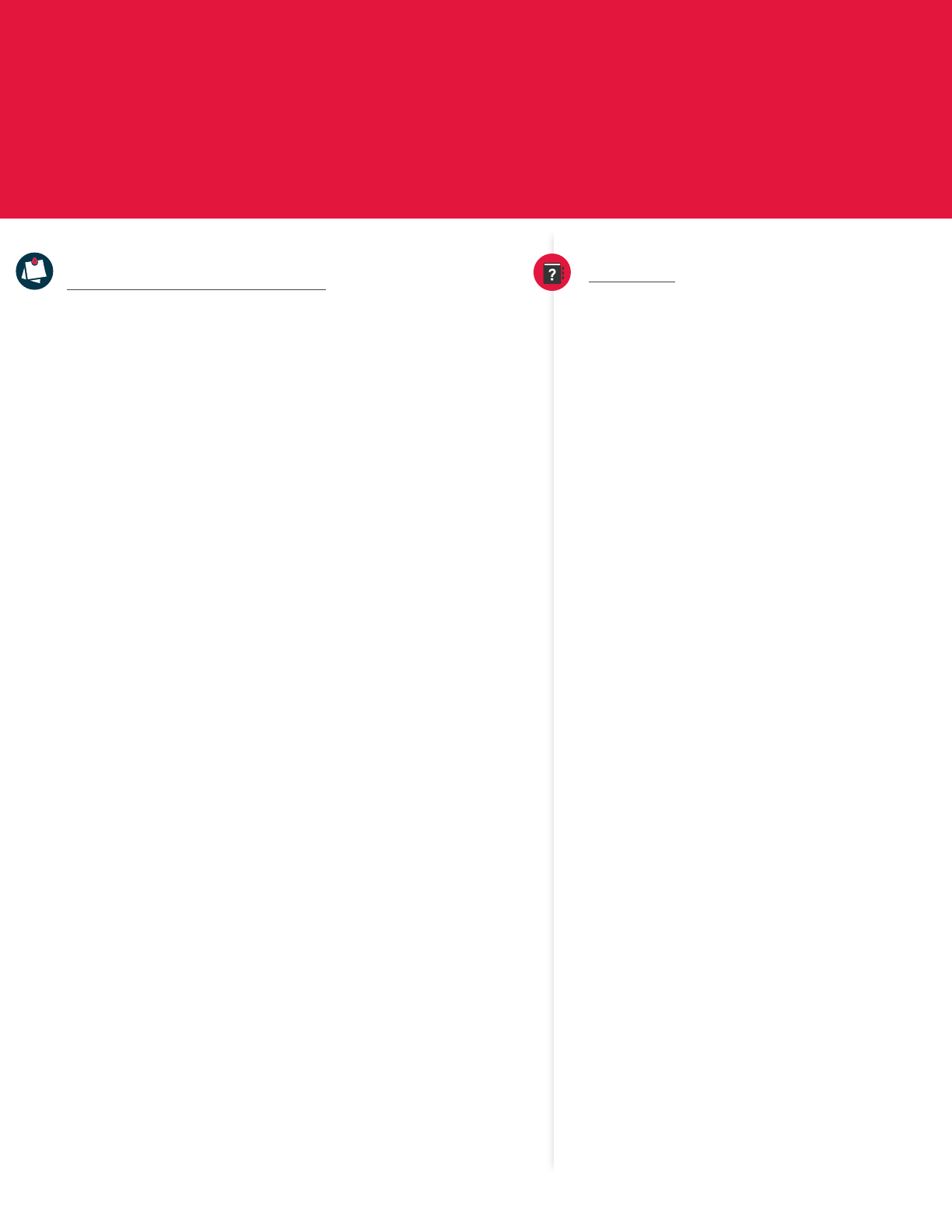
Documentation Skills for Community Health Workers
A Training Curriculum for Community Health Workers | Core Competencies
INSTRUCTIONS (continued)
Resources
National Career Development Association
Tips for writing case notes available at:
https://www.ncda.org/aws/NCDA/pt/sd/
news_article/5443/_PARENT/CC_layout_
details/false
Learning to Write Case Notes article available
at: https://onlinelibrary.wiley.com/doi/
abs/10.1002/j.1556-6678.2002.tb00193.x
Additional sample forms for documenting
work can be found in the Building Blocks to
Peer Program Success resources in Section
7 at https://ciswh.org/res ources/HIV-p eer-
training-toolkit
5. Practice writing case notes
§ Explain that we are now going to practice reviewing
and writing case notes.
§ Review examples of a substandard case note and
discuss how it could be better (slides 26–27).
§ Review example of a better case note (slide 28).
§ Facilitate the activity for Sheila’s visit (slide 29).
Participants can be placed into pairs. Distribute
blank SOAP notes. Allow participants 15 minutes
tocomplete.
§ Bring the group back together to discuss their SOAP
notes and care plans for Sheila.
6. Wrap up. Summarize documentation content (slide 30)
and ask participants to think about how they currently
write notes (slide 31). Ask, “What one thing are you
taking away from today’s session to use in your work?”
Be sure to solicit responses from both supervisors and
CHWs if they are in the session together.
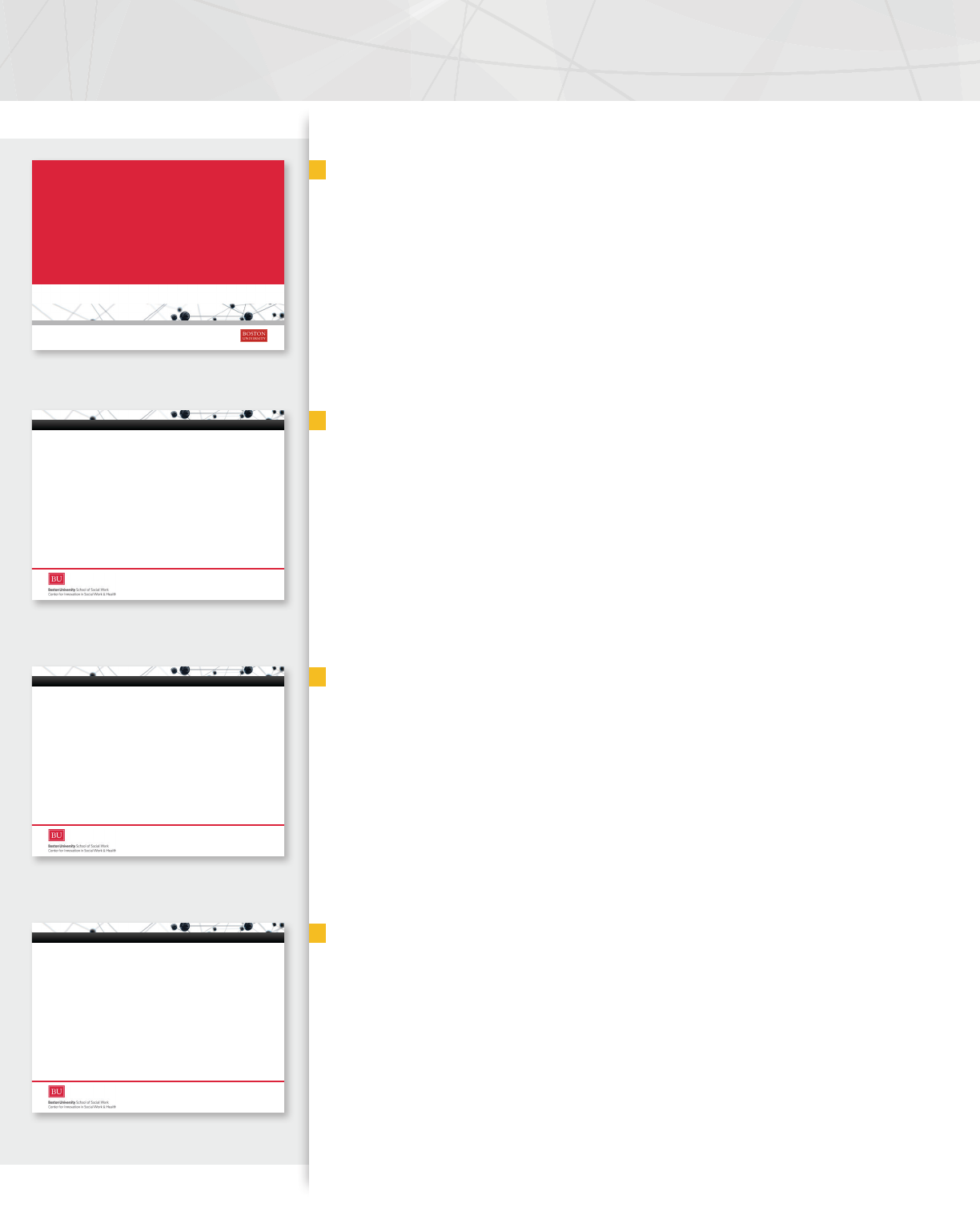
3
Documentation Skills for Community Health Workers
SLIDE 1
Boston University Slideshow Title Goes Here
Objectives
§ To review the purpose and common elements of good
case notes
Case Notes
§ To identify the challenges associated with completing
case notes in an effective manner
§ To identify best practices and what you as a CHW
bring to the process
§ To practice writing a progress note based on a case
scenario
Boston University School of Social Work
Center for Innovation in Social Work & Health
Documentation Skills for CHWs:
Writing Useful Case Notes
SLIDE 2
Review the slide.
Explain that in this session we will learn how to document our work with clients using
the SOAP note approach, so we can share updates with the care team. Different
organizations use different database systems and other forms of health information
technology to record participant information. For our purposes today, we are going
to focus on how to appropriately document our work as CHWs, knowing that each
agency may use different technology to record information.
Boston University Slideshow Title Goes Here
“If it isn’t written down, it didn’t happen.”
Case Notes
SLIDE 3
Ask, “Have you heard this phrase from supervisors or other people? What is your
reaction to this statement?” Hold a brief discussion.
Boston University Slideshow Title Goes Here
Why do we write case notes?
Case Notes
SLIDE 4
Ask, “Why do we write case notes?” Write responses on a flip chart sheet.
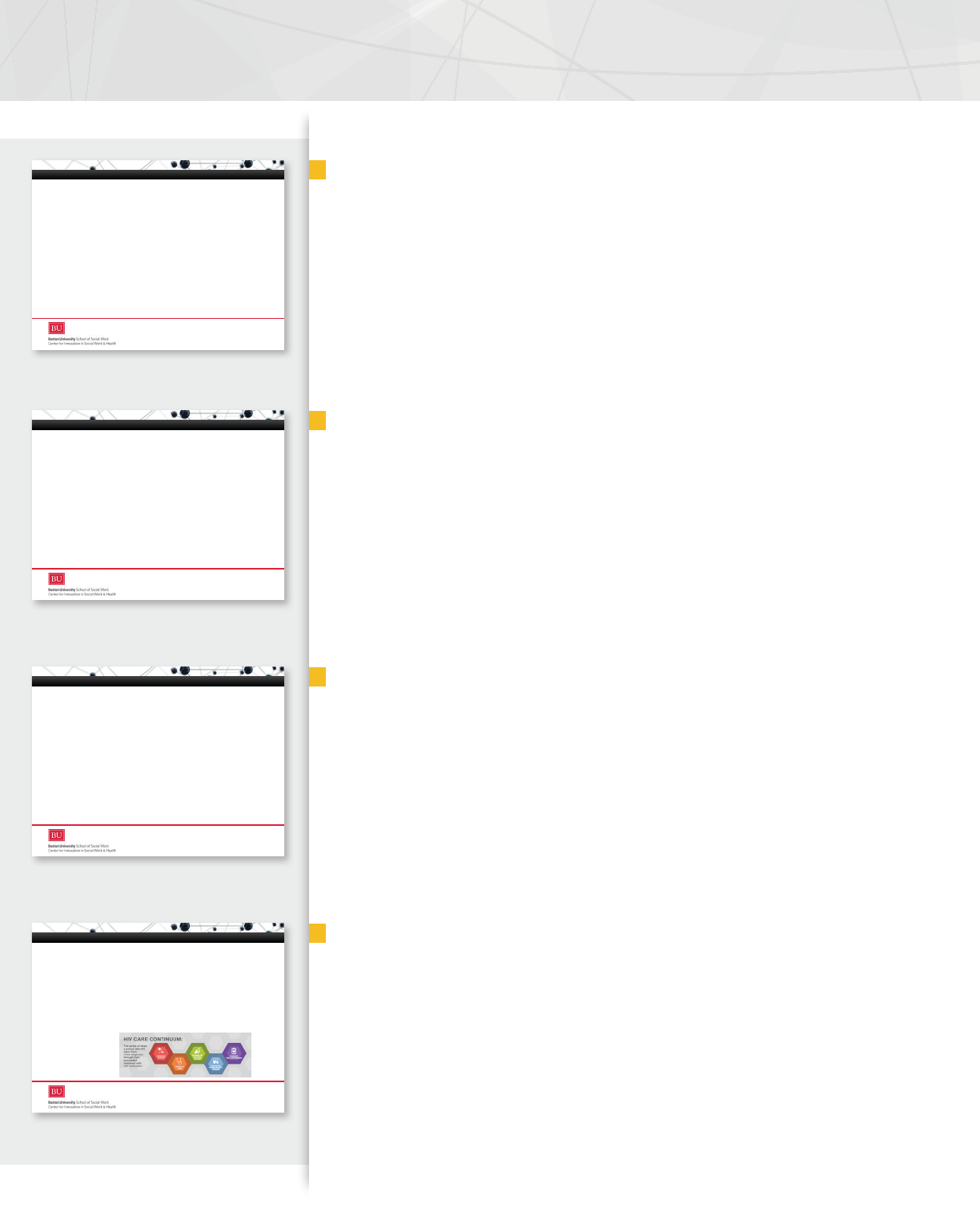
4
Documentation Skills for Community Health Workers
SLIDE 5
After the brainstorm, thank everyone for sharing.
The next few slides summarize some of the common reasons for documentation.
Review the next slides quickly; the facilitator can ask for volunteers to read them
ifdesired.
Boston University Slideshow Title Goes Here
We Document for Our Team Members
§ Part of your job duties
§ Guided by your agency’s documentation requirements
§ Helps keep team members on the same page,
especially if you are not available to provide an update
in person
Case Notes
Boston University Slideshow Title Goes Here
Purpose of Case Notes
The patient case note:
§ Is a basis for planning patient care
§ Documents communication between the health care provider
and any other health professional contributing to the patient’s
care
§ Assists in protecting the legal interest of the patient and the
health care providers responsible for the patient’s care
§ Documents the care and services provided to the patient
§ Provides adequate documentation for correct billing and
reimbursement
Case Notes
SLIDE 6
Review the slide.
Boston University Slideshow Title Goes Here
For our clients—it’s part of our service to them
§ Providing a historical record of client’s progress and
action plans
§ Reflecting respect for our clients and the issues with
which they are dealing
§ Honoring the relationship we have with them, the lives
that they are sharing with us
Case Notes
SLIDE 7
Review the slide.
Boston University Slideshow Title Goes Here
For our Funders
§ Case notes document that we are doing what we are
paid to do
§ Are programs are performing as expected?
§ Are programs cost-effective?
§ How do CHWs contribute to program and client
successes?
Case Notes
SLIDE 8
Review the slide.
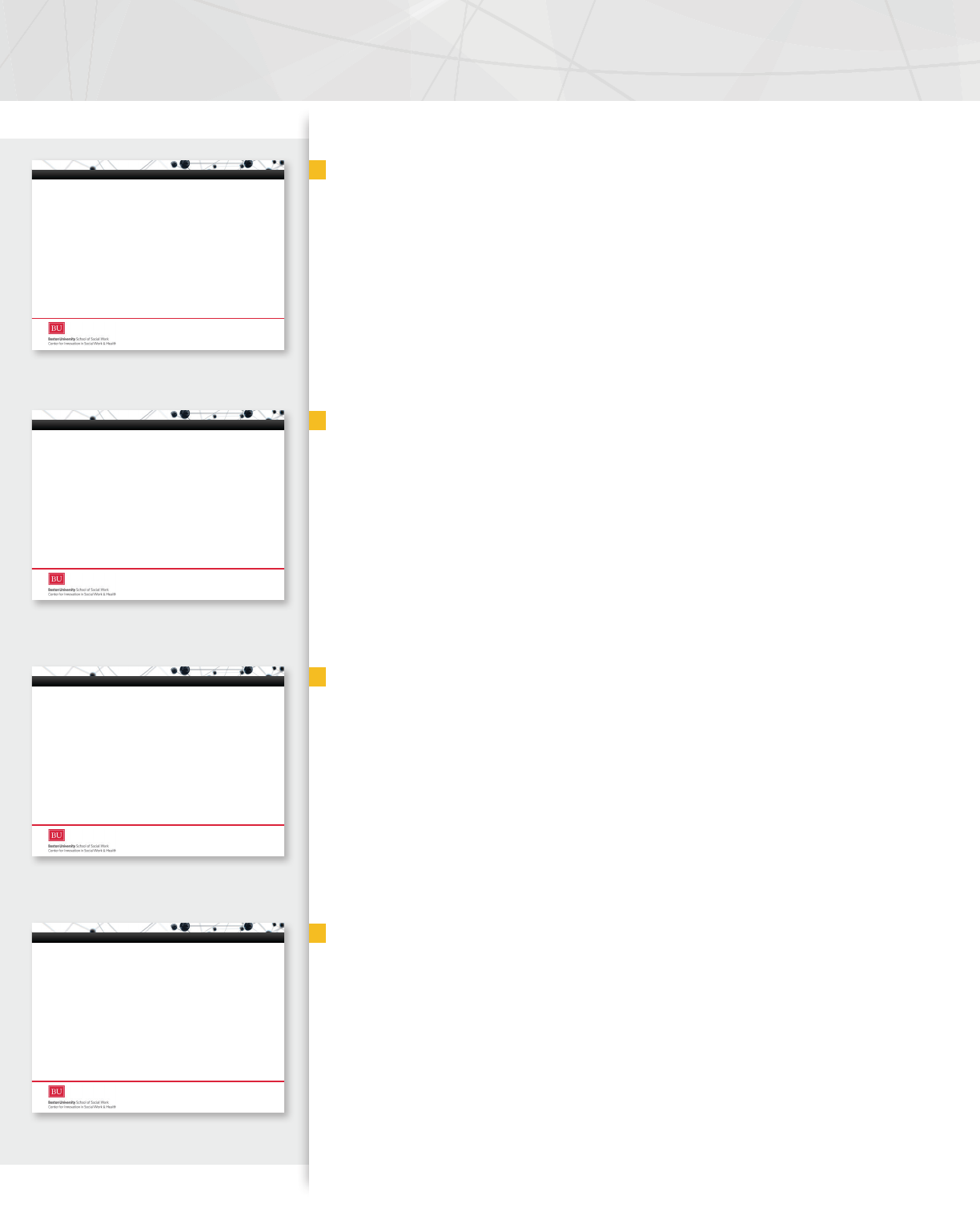
5
Documentation Skills for Community Health Workers
SLIDE 9
Brainstorm with participants to identify challenges. Write responses on flip chart.
Boston University Slideshow Title Goes Here
How have you overcome these challenges?
What works for you?
Case Notes
Boston University Slideshow Title Goes Here
What are the challenges of documenting your
work with clients?
Case Notes
SLIDE 10
Invite participants to share their experiences and best practices. Write responses
onflip chart.
Boston University Slideshow Title Goes Here
What You Bring to the Process
Observational skills: an essential asset for CHWs
§ How observant are you in your work with clients?
§ Make a conscious decision to be more present, more
aware using all of your senses:
§ What do you see?
§ What do you hear?
§ What do you smell?
§ What do you feel?
Case Notes
SLIDE 11
Review the slide.
Boston University Slideshow Title Goes Here
Important Points Regarding Progress Notes
Your client file notes, including written chart notes, are legal
documents that can be subpoenaed at any time. Staff can be
cross examined regarding the content of progress notes.
§ Don’t add personal opinions to case notes without facts
and/or observations to back them up.
§ Don’t diagnose.
§ All computers should be locked when you are not at your
workstation.
§ Mobile devices should be locked and have password
protection.
Case Notes
SLIDE 12
Read the slide.
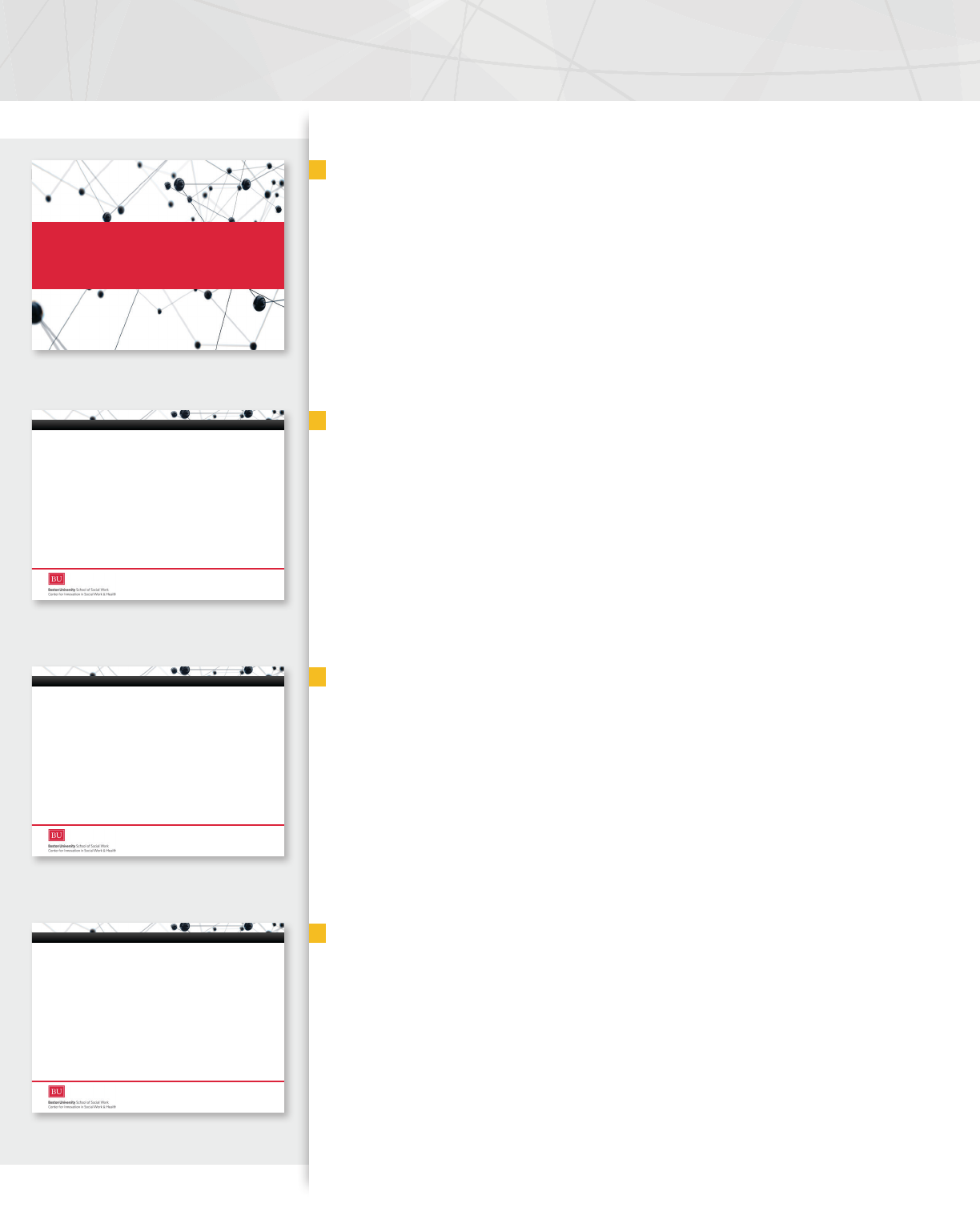
6
Documentation Skills for Community Health Workers
SLIDE 13
Next we are going review how to write effective case notes.
Boston University Slideshow Title Goes Here
§ Clarify the requirements and expectations for your case
notes.
§ Review your case notes with your supervisor to
determine the specific content you are to include, the
format, the length of the note, and other organizational
details – the structure.
§ Create an outline for yourself as a tool to actively use
when writing your notes.
Setting the Stage
Case Notes
Boston University Slideshow Title Goes Here
HOW TO WRITE EFFECTIVE CASE NOTES
SLIDE 14
Review the slide.
Boston University Slideshow Title Goes Here
What goes in a case note?
What do you think is important to remember
when doing documentation work?
Case Notes
SLIDE 15
Briefly invite participants to share ideas. Write responses on flipchart.
Boston University Slideshow Title Goes Here
Case Note Content
§ Community health worker’s name
§ Date of case note
§ Client’s name
§ Date of visit/session
§ Purpose of visit/session
§ Observations
§ Topics discussed
§ Movement toward goals since last visit
§ Obstacles toward progress re: goals
§ Brief summary, next steps
Case Notes
SLIDE 16
This slide lists the core elements of a good case notes. . . . Ask a volunteer to read
theslide.
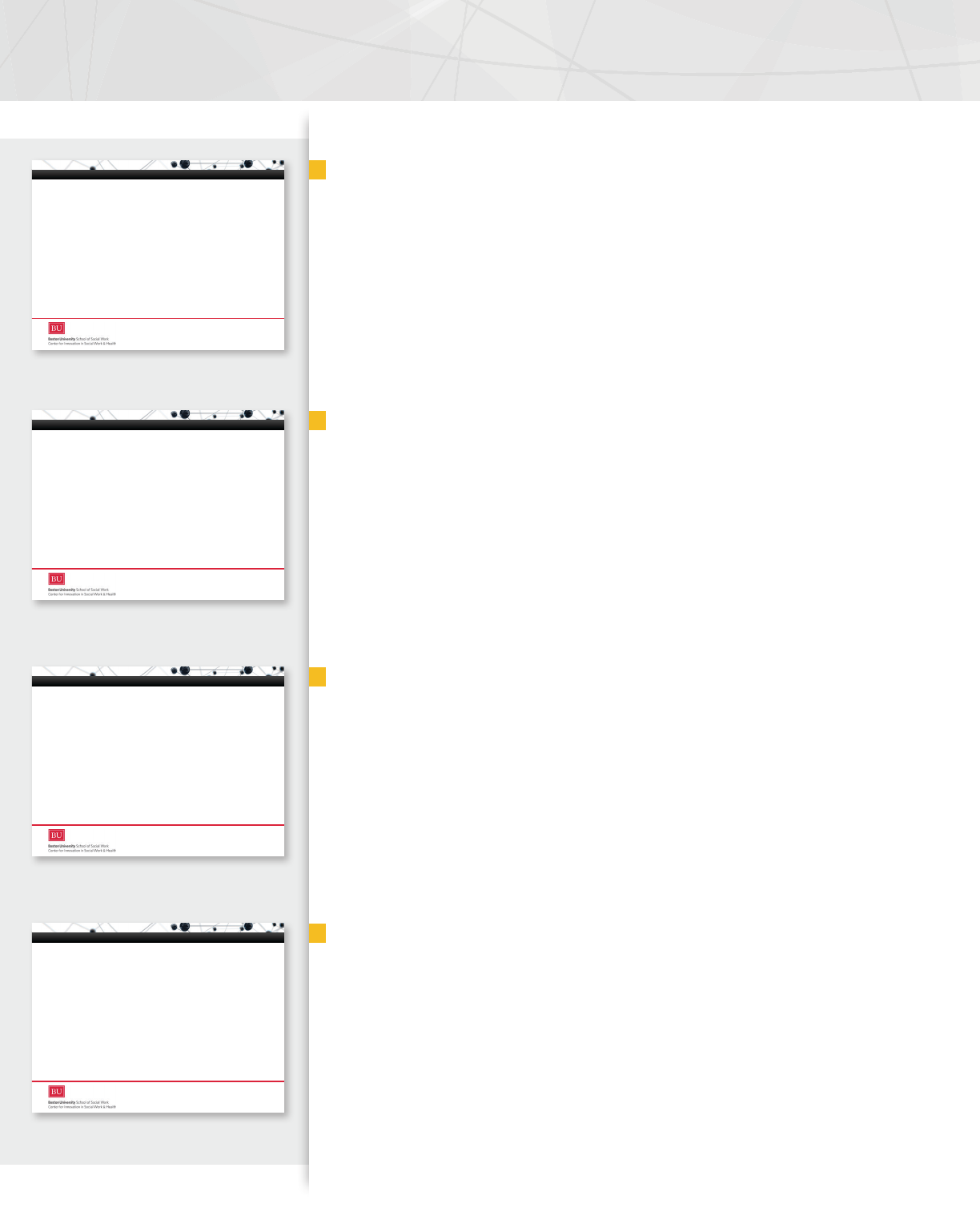
7
Documentation Skills for Community Health Workers
SLIDE 17
Distribute and refer to the SOAP note handout.
Emphasize that the Subjective section should include what the client tells us.
Objective data includes what we can observe that is measurable and describable—
what did we see, count, hear, smell or measure?
Boston University Slideshow Title Goes Here
§ Assessment: your opinion or interpretation of the client’s
situation as reported and based on what you observe.
§ Example: Client upset about possible loss of housing and
its effects on client’s health.
§ Plan: What do the client and CHW want to do to resolve the
issue or situation? How will it be accomplished? Who will do
what ?
§ Example: Provide emotional support regarding fear of losing
housing. Rule out other causes of eviction and agitation.
CHW will prepare referral to housing advocate to minimize
disruption and provide hope for new housing option. Client
will gather proof of income, etc. to prepare for housing
meeting. CHW will update care plan with new housing goal.
Case Notes
Boston University Slideshow Title Goes Here
SOAP Notes: S = Subjective O = Objective
A = Assessment P = Plan
§ Subjective Data: What the client (or significant other) tells
us about their condition
§ Example: Client reports great concern about losing
housing - owner is losing the property. Client reports not
sleeping well, no appetite, and doesn’t know what he’s
going to do.
§ Objective: What you observe or find during the CHW visit.
§ Example: Client is visibly upset (crying, frantic speech,
pacing, shifting in the seat often)
Case Notes
SLIDE 18
The Assessment section should include what is happening and/or needed with
theclient.
The Plan is the joint plan of action for the CHW and the client.
Boston University Slideshow Title Goes Here
Case Note Considerations
§ Collaborative: Will you be writing down the case notes in the
moment so that the member of the care team can review them, or
afterwards? Consider doing a check in with your supervisor or
other care team member to reflect back what you hear before
writing it down.
§ Timeliness: As soon as possible after the encounter, outline the
strengths and challenges that you heard.
§ Participant records: Whatever you write becomes a record of the
client; don’t write anything you couldn’t verbally say. Remember
that the client is the owner of their own record and that others who
have access to their case notes will react based on what was
written.
§ Non-judgmental: Try to not interpret their behavior or be
judgmental.
Case Notes
SLIDE 19
Review the slide.
Boston University Slideshow Title Goes Here
Case Note Considerations (cont.)
§ Confidentiality: Remember not to identify others by name in a
participant’s record; describe them by relationship. Keep HIPAA and
other personal identifying information safe, particularly when in transit.
§ Risk assessment: One function of documentation is to note risks and
your responses to them, for the protection of the client, yourself, and
your organization’s legal protection.
§ Track sessions and appointments: Documentation helps us track a
client’s progress, and helps us keep continuity from meeting to meeting
by helping us remember and review what has already happened.
§ Amending notes: Use appropriate methods of amending notes, by
making corrections and signing your notes.
§ Organization: Keep your case files organized and write legibly.
Case Notes
SLIDE 20
Review the slide.
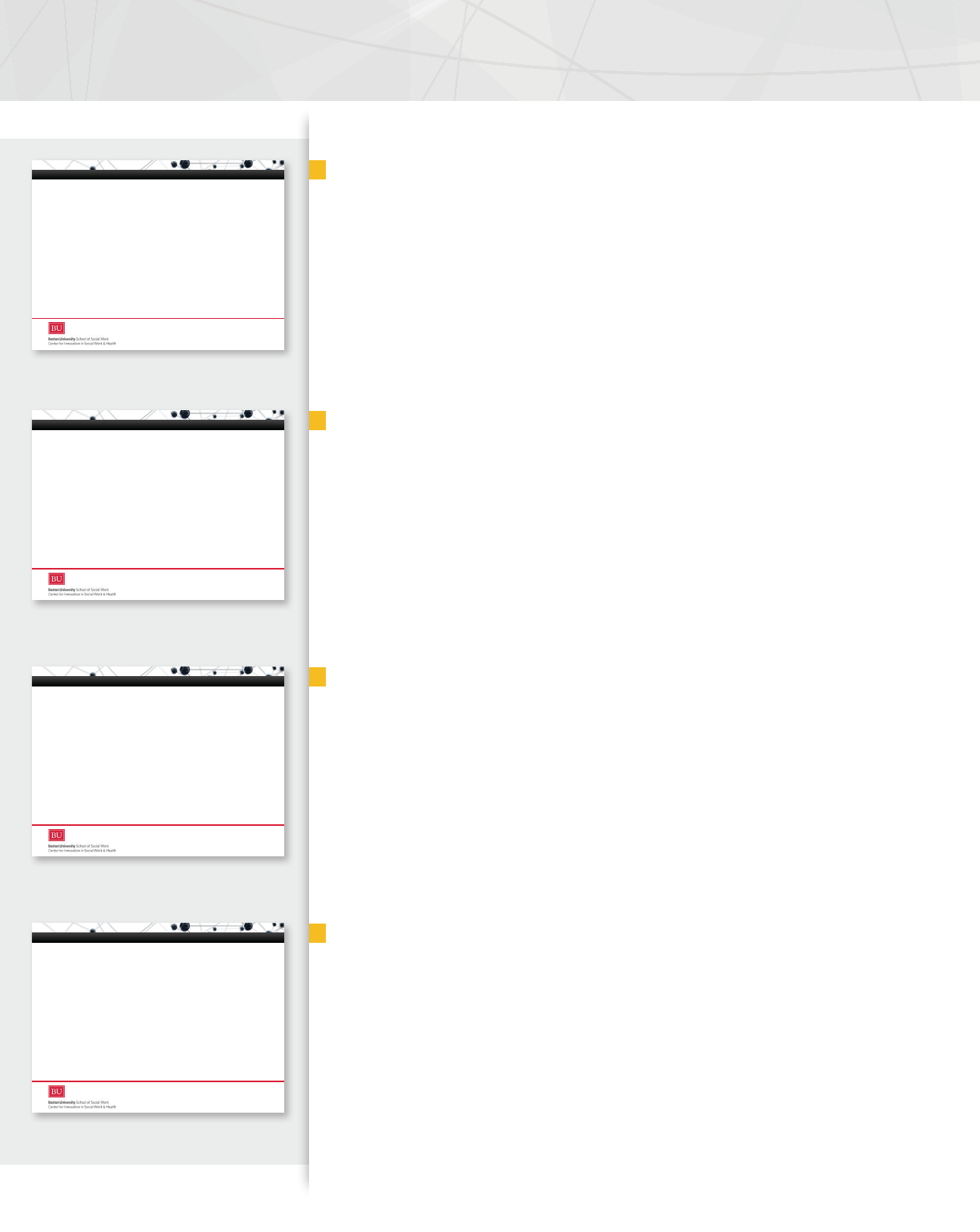
8
Documentation Skills for Community Health Workers
SLIDE 21
Review the slide.
Boston University Slideshow Title Goes Here
Using Your Agency Template…Start Writing
§ Write brief sentences
§ Write short paragraphs
§ Choose simple words
§ Use a professional style –
§ No contractions (isn’t, can’t, wouldn’t)
§ Not chatty, more serious
§ Keep it concise and to the point
§ Clients have the right to access their records so they
should always be written as accurately and clearly as
possible
Case Notes
Boston University Slideshow Title Goes Here
Preparing to Write Your Case Note
§ Re-read your previous note (if possible)
§ Refer to agency charting guidelines
§ Identify key facts (observations, information)
§ Identify key themes (the purpose of your session, the
goals, progress, barriers to progress)
§ Write your case notes as soon as possible after you
have seen or spoken with a client
Case Notes
SLIDE 22
Review the slide.
Boston University Slideshow Title Goes Here
Time Management
§ Schedule “case notes” time on your weekly calendar
(datebook, phone or computer)
§ If possible, pick a time that’s best for you
§ Block out enough time on your calendar during the
week to complete the number of notes you need to
write
Case Notes
SLIDE 23
Review the slide.
Boston University Slideshow Title Goes Here
Setting Charting Goals
§ How many case notes do you need to write (to catch
up, to stay current each week)?
§ How many notes can you write in an hour?
§ How many hours do you need to complete your notes
each week?
§ How much time realistically devote to writing notes in
one sitting? (one hour at a time, more?)
§ Boundaries, boundaries, boundaries
Case Notes
SLIDE 24
Review the slide.
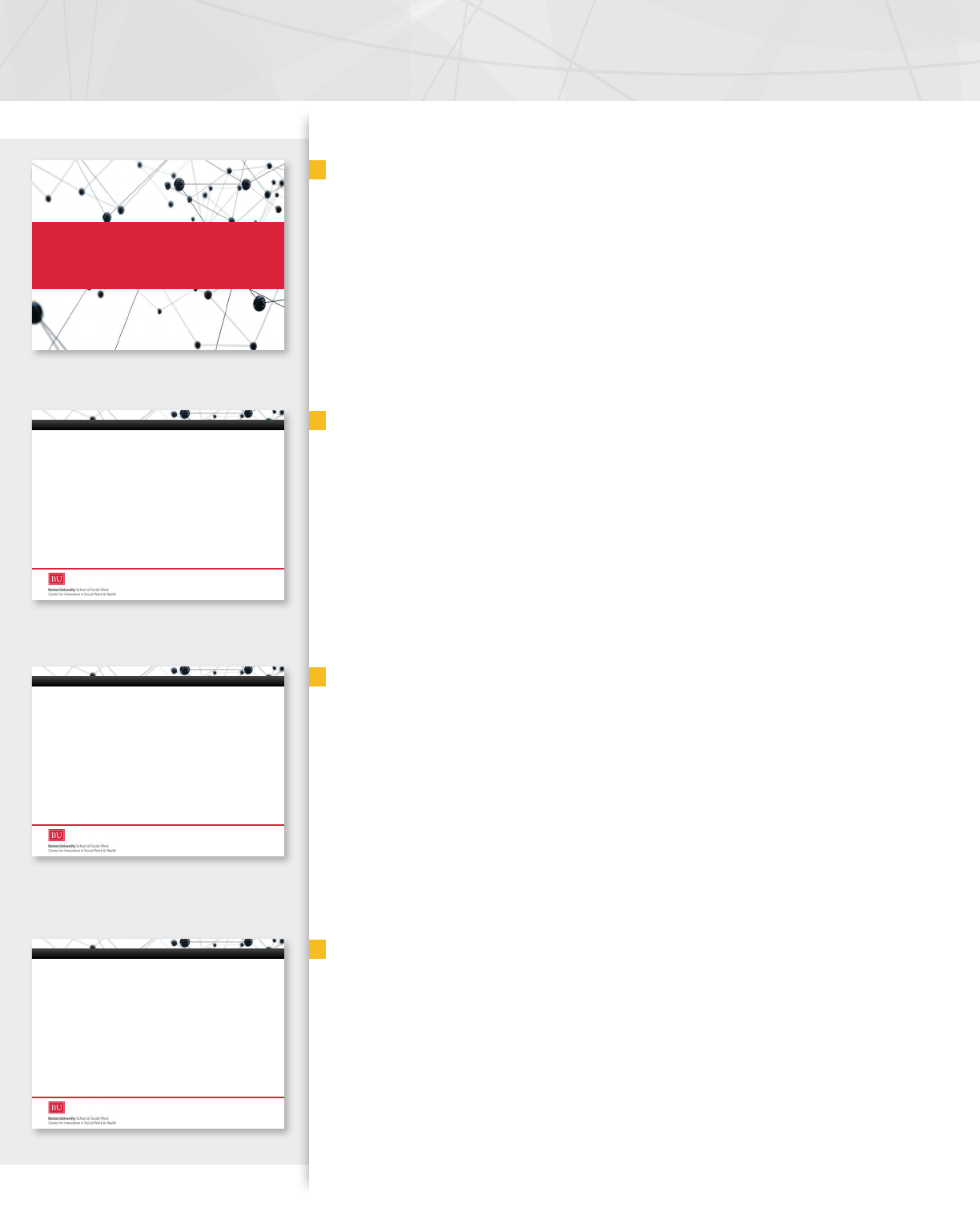
9
Documentation Skills for Community Health Workers
SLIDE 25
We are now going to critique sample chart notes to identify weaknesses and ways
toimprove the note.
Boston University Slideshow Title Goes Here
Sample Case Note
Phoned client to check how things were going in relation to problems
with transport to visit various specialists at the local hospital. Client
said that family is unable to assist. Said that I had been in contact
with local community transport group who are happy to assist.
However, client will need to contact them to make the arrangements
and provide details of dates and times. Client indicated that this was
fine and that he would get in touch with them in the next few days.
Indicated that I would see him next week as arranged.
Case Notes
Boston University Slideshow Title Goes Here
PRACTICE
SLIDE 26
Ask for a participant to read the slide.
Then ask, “Do you think that these case notes are useful? If not, why not? How
wouldyou improve them?”
Boston University Slideshow Title Goes Here
Sample Case Note
§ Subjective: Jason’s a thirty-year-old white gay male seeing a
CHW for navigation services. CHW will escort client to med review
appt cause client doesn’t understand the Dr. Client is late as
always. Answers door in dirty clothes and was probably high.
Blames new meds for oversleeping. May lose job because he’s
late.
§ Objective: Client newly diagnosed started ART and says he’s
taking medication but I don’t believe him. Other clients don’t have
these problems on meds.
§ Assessment: I think something is going on with client. He’s
complaining about being tired and unable to wake up in time for
work.
§ Plan: To see PCP as soon as possible.
Case Notes
SLIDE 27
Ask for a participant to read this SOAP note.
Ask, “Why is this a substandard case note?”
Possible answers:
§ No documentation of who wrote note, date, time, place
§ Judgmental: Client is late AS always. Client is high.
§ Not objective: “I don’t believe him…Other clients don’t have these problems.”
§ Risk assessment: Too subjective: “I think something is going on with the client.”
§ Casual/unprofessional writing style.
Boston University Slideshow Title Goes Here
An Example of a Better Case Note
Community Health Worker: Joni Williams
Case note date: 8/21/2018
Client’
’
s name: Jay Grayson
Client ID: 5692348
Encounter date: 8/20/2018
Subjective: During scheduled home visit by CHW, the client describes feeling very tired in the mornings and not
being able to get out of bed until after 11 a.m. Client reports that this change in his morning routine began a week
ago after starting new medication. Client reports he has been late getting to work and may be fired from his job.
Client is very worried about not having income if he loses his job.
Objective: CHW arrives at 31-year-old client’s home at 10:30am per client request. Client got out of bed to
answer the door bell. Client yawns throughout visit and speech is slow and disjointed. The client’s living area is
messier than usual. Client was visibly upset about possible loss of job and the consequences of not having rent
money.
Assessment: Client started a new medication 8 days ago. Other than the new medication, client denies any
recent changes in lifestyle which may be affecting his usual sleep pattern. CHW agrees that client may be
having difficulty with new medication. CHW verified the name of drug and identified the PCP as the prescriber.
Client and CHW explored possible ways to address the problem.
Plan: During home visit, CHW assisted the client to make same day appointment with client’s PCP to determine
if a medication adjusted is needed. The appointment is at 2:00pm. The CHW to return to client’s apartment at
1:15pm to pick up client and accompany client on PCP visit. During PCP visit, client to explore sleep problems
and possible solutions. Following PCP visit, CHW to provide support for client contacting employee about
tardiness and to facilitate continued employment.
Case Notes
SLIDE 28
Review the slide.
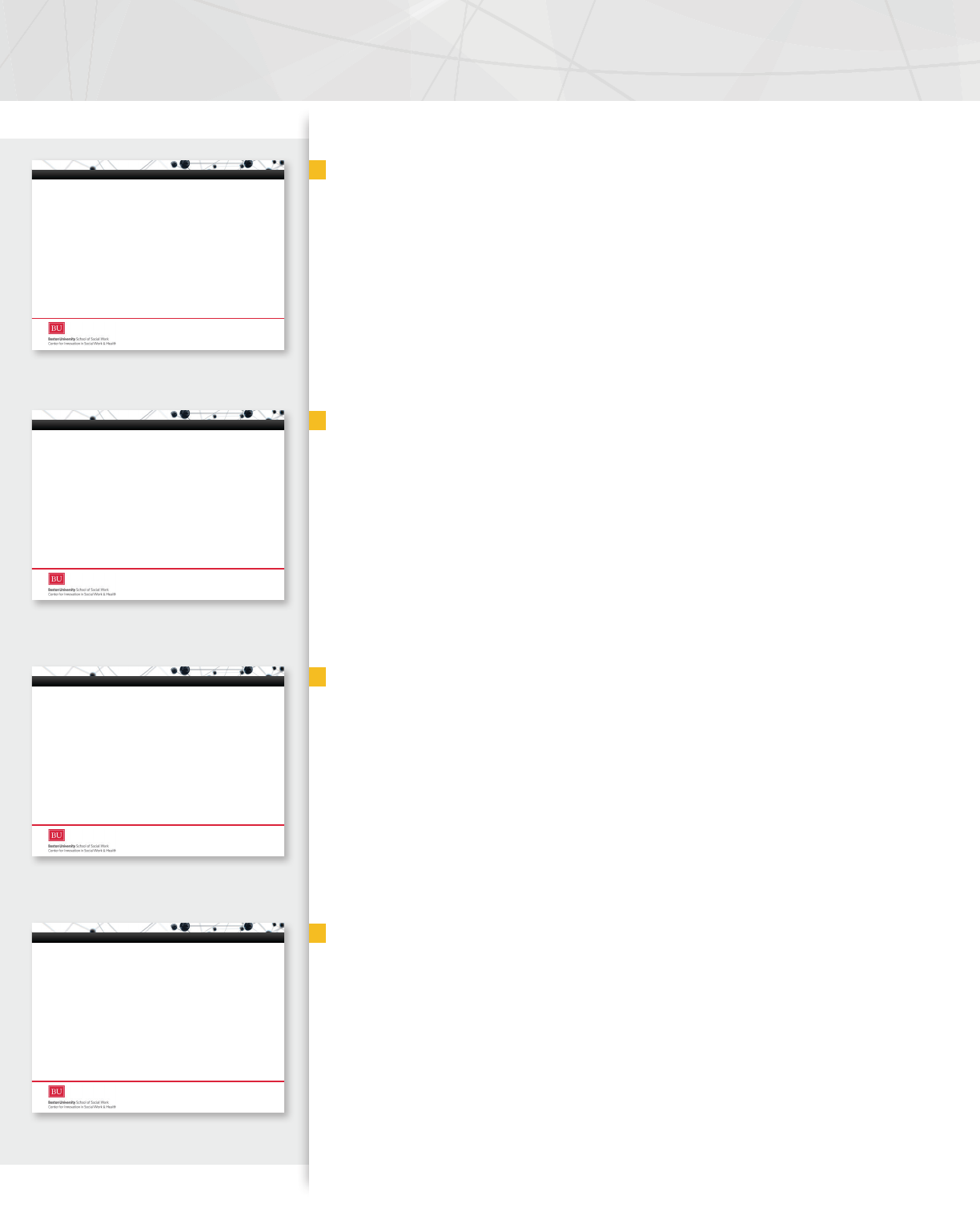
10
Documentation Skills for Community Health Workers
SLIDE 29
Now we will write our own case note and care plan. Here are your rough notes about
work you did today with Sheila. How would you turn this into a chart note?
Divide participants into pairs and pass out the blank SOAP note. Have participants
write a SOAP note for her visit. Allow 15 minutes for completion.
Bring the group back together to share their notes.
Boston University Slideshow Title Goes Here
Sample Case Note Content
§ Community Health Worker’s name
§ Date of case note
§ Client’s name
§ Date of visit/session
§ Purpose of visit/session
§ Observations
§ Topics discussed
§ Movement toward goals since last visit
§ Obstacles toward progress re: goals
§ Brief summary, next steps
Case Notes
Boston University Slideshow Title Goes Here
Write a Case Note: Sheila’s Visit
At huddle the Insurance Assister lets you know that Sheila’s insurance is
about to expire. Sheila is coming in today to talk about food resources
and for help with her food stamp application. She arrives 15 minutes late
dressed in a pretty A-line summer dress with yellow flowers and green
cardigan. Her hair is neatly combed. She apologizes for being late
stating the reason being she had a job interview. You check in with her
and she reports she is having financial trouble but has a good attitude
about it. You help her with the food stamp application and call with her to
make an appointments with Ms. Anita Clark at Human Resources
08/10/2018 @ 8:00 am and Brad the Insurance Assister later the same
day at 3:00pm. You give her a resource list with food banks locations and
hours and remind her of her upcoming lab appoint on 09/01/2018 at 9:00
am.
Case Notes
SLIDE 30
As participants discuss their SOAP notes, reference the content that should appear
inthe case note.
Boston University Slideshow Title Goes Here
In Closing…
§ Consider the case notes you are currently writing. Would they be useful
to another case worker if you were to leave the organization? Do they
give an accurate picture of the client's history and current situation?
§ Can you think of ways in which you could write better case notes than
the ones you are currently writing? Here are some things to think about:
§ Do you always use language that is non-judgmental (i.e. neutral)?
§ Do you avoid making assumptions about the client and always stick to the
facts?
§ Do you always indicate clearly when a comment is your own observation?
§ Do you make it clear when you are recording the client's own words (by
using quotation marks or by writing “the client stated that...”)?
§ Are there any guidelines in your policy and procedure manual regarding
critical incidents? How are these reports filed at your organization? Are
they kept in a secure place?
Case Notes
SLIDE 31
Encourage participants to add their thoughts on how they could improve the case
notes they write.
Boston University Slideshow Title Goes Here
What one thing are you taking away from
today’s session to use in your work?
Case Notes
SLIDE 32
Ask, “What one thing are you taking away from today’s session to use in your work?”
Be sure to solicit responses from both supervisors and CHWs if they are in the
session together.
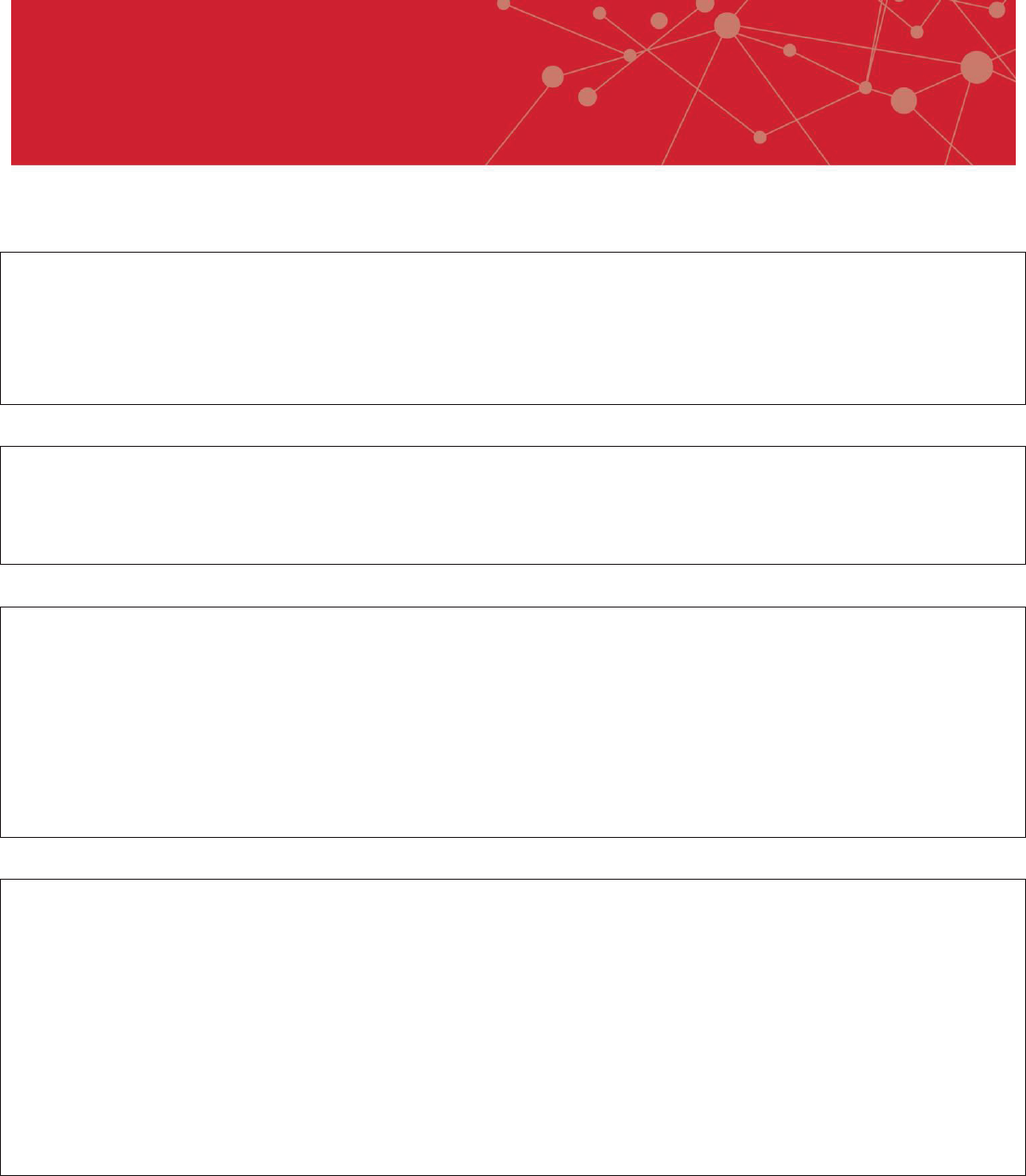
1
SOAP Notes
S=Subjective, O- Objective, A=Assessment, P-Plan
Subjective Data: What the client (or significant other) tells us about their
condition. Example: Client reports great concern about losing housing - owner is
losing the property. Client reports not sleeping well, no appetite, and does not
know what he is going to do.
Objective: What you observe or find during the medical case management
visit. Example: Client is visibly upset (crying, frantic speech, pacing, shifting
in the seat often.
Assessment:
The CHW’s opinion or interpretation of the client’s situation as
reported and you observe. The conclusions made in the assessment are more than a
restatement of the problem as it determines whether or not the situation can be
resolved.
Example: Client upset about possible loss of housing and its effects on client’s
health.
Plan: What do the client and case manager want to do to resolve the issue or
situation? How will it be accomplished? Who will do what part of the service?
This can often be incorporated into the care plan.
Example: Provide emotional support regarding fear of losing housing. Rule out
other causes of eviction and agitation. CHW will prepare referral to housing
advocate to minimize disruption and provide hope for new housing option. Client
will gather proof of income, etc. to prepare for housing meeting. CHW will update
care plan with new housing goal.
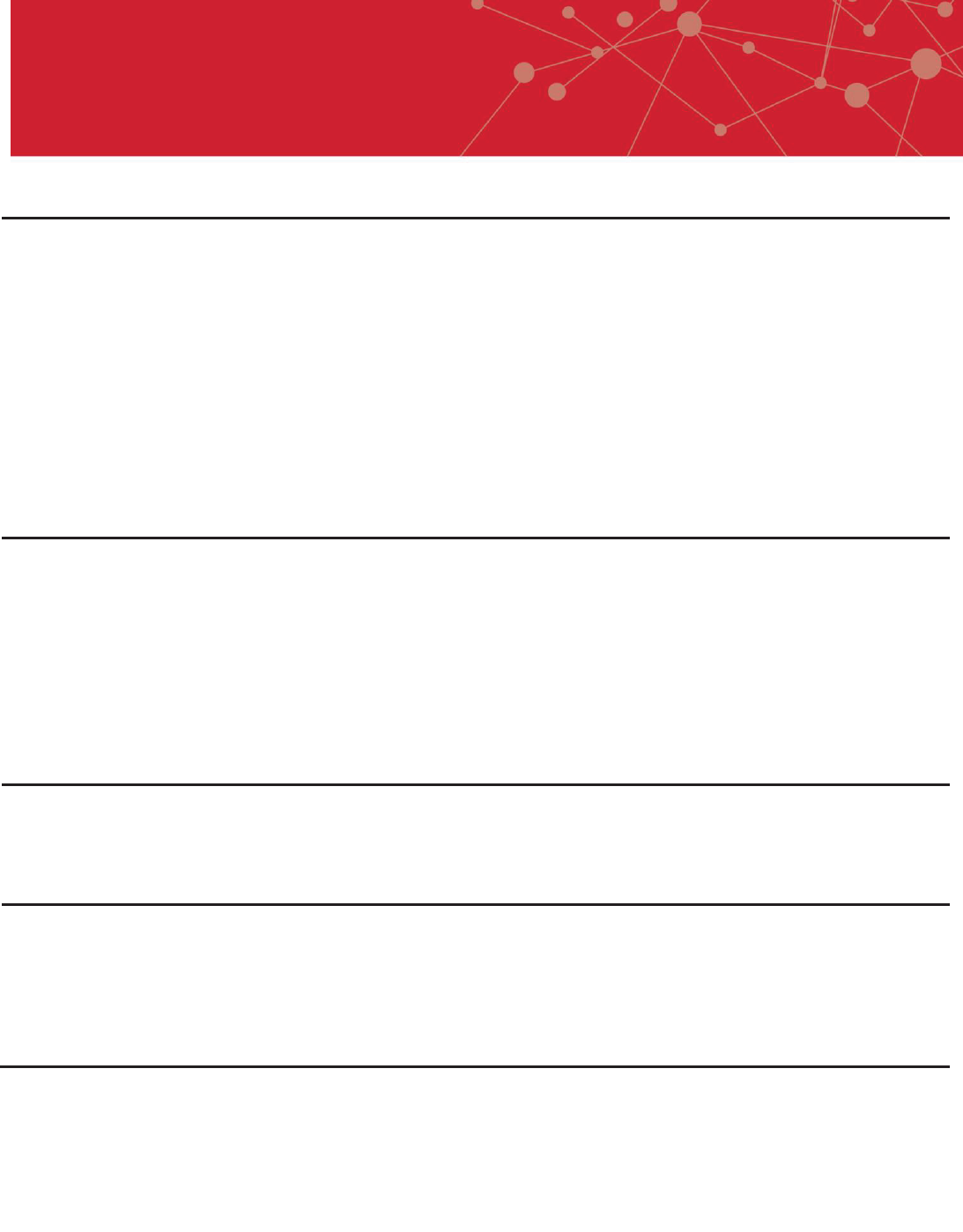
© Community Capacitation Center, Multnomah County Health Department, 2013. All rights reserved.
SOAP Definitions and Examples
Section
Definitions
Examples
Subjective (S)
What the community member
tells you
What pertinent others tell you
about the community member
Basically, how the community
member experiences the world
Community member’s feelings,
concerns, plans, goals, and thoughts
Intensity of problems and impact on
relationships
Pertinent comments by family, case
managers, behavioral therapists,
medical professionals, etc.
Community member’s orientation to
time, place and person
Community member’s verbalized
changes toward helping
Objective (O)
Factual
What the CHW personally
observes/witnesses
Quantifiable: what was seen,
counted, smelled, heard or
measured
Outside written materials
received
The community member’s general
appearance, affect, behavior
Nature of the helping relationship
Community member’s demonstrated
strengths and weaknesses
Test results, materials from other
agencies, etc. are to be noted and
attached
Assessment (A)
Summarizes CHWs thinking
A synthesis and analysis of the
subjective and objective
portion of the notes
How would you describe the community
member’s behavior and the reasons (if
any) for this behavior?
Plan (P)
Describe the parameters of the
intervention
Consists of an action plan and
prognosis
Action plan: Include interventions used,
progress towards goals, and direction.
CHWs should include the date of the
next appointment.
Prognosis: Include the anticipated gains
from the interventions

© Community Capacitation Center, Multnomah County Health Department, 2013. All rights reserved.
Guidelines for Subjective, Objective, Assessment, Plan (SOAP) Noting
Do
Avoid
Be brief and concise
Keep quotes to a minimum
Use an active voice
Use precise and descriptive terms
Record immediately after each
session
Start each new entry with date and
time of session
Write legibly and neatly
Use proper spelling, grammar and
punctuation
Document all contacts or attempted
contacts
Use only black ink if notes are
handwritten
Sign-off using legal signature, plus
your title
Avoid using names of other clients, family
members, or others named by community
member
Avoid terms like “seems, appears,” etc.
Avoid value-laden language, common
labels, opinionated statements
Do not use terminology unless trained to do
so
Do not erase, obliterate, use correction
fluid, or in any way attempt to obscure
mistakes
Do not leave blank spaces between entries
Do not try to squeeze additional
commentary between lines or in margins

1
Example of a Better Case Note
Community Health Worker: Joni Williams
Case note date: 8/21/2018
Client’ s name: Jay Grayson
Client ID: 5692348
Encounter date: 8/20/2018
Subjective: During scheduled home visit by CHW, the client describes
feeling very tired in the mornings and not being able to get out of bed until
after 11 a.m. Client reports that this change in his morning routine began
a week ago after starting new medication. Client reports he has been late
getting to work and may be fired from his job. Client is very worried about
not having income if he loses his job.
Objective: CHW arrives at 31-year-old client’ s home at 10:30am per client
request. Client got out of bed to answer the door bell. Client yawns
throughout visit and speech is slow and disjointed. The client’ s living
area is messier than usual. Client was visibly upset about possible loss of
job and the consequences of not having rent money.
Assessment: Client started a new medication 8 days ago. Other than the
new medication, client denies any recent changes in lifestyle which may
be affecting his usual sleep pattern. CHW agrees that client may be
having difficulty with new medication. CHW verified the name of drug and
identified the PCP as the prescriber. Client and CHW explored possible
ways to address the problem.
Plan: During home visit, CHW assisted the client to make same day
appointment with client’ s PCP to determine if a medication adjusted is
needed. The appointment is at 2:00pm. The CHW to return to client’ s
apartment at 1:15pm to pick up client and accompany client on PCP visit.
During PCP visit, client to explore sleep problems and possible solutions.
Following PCP visit, CHW to provide support for client contacting
employee about tardiness and to facilitate continued employment.
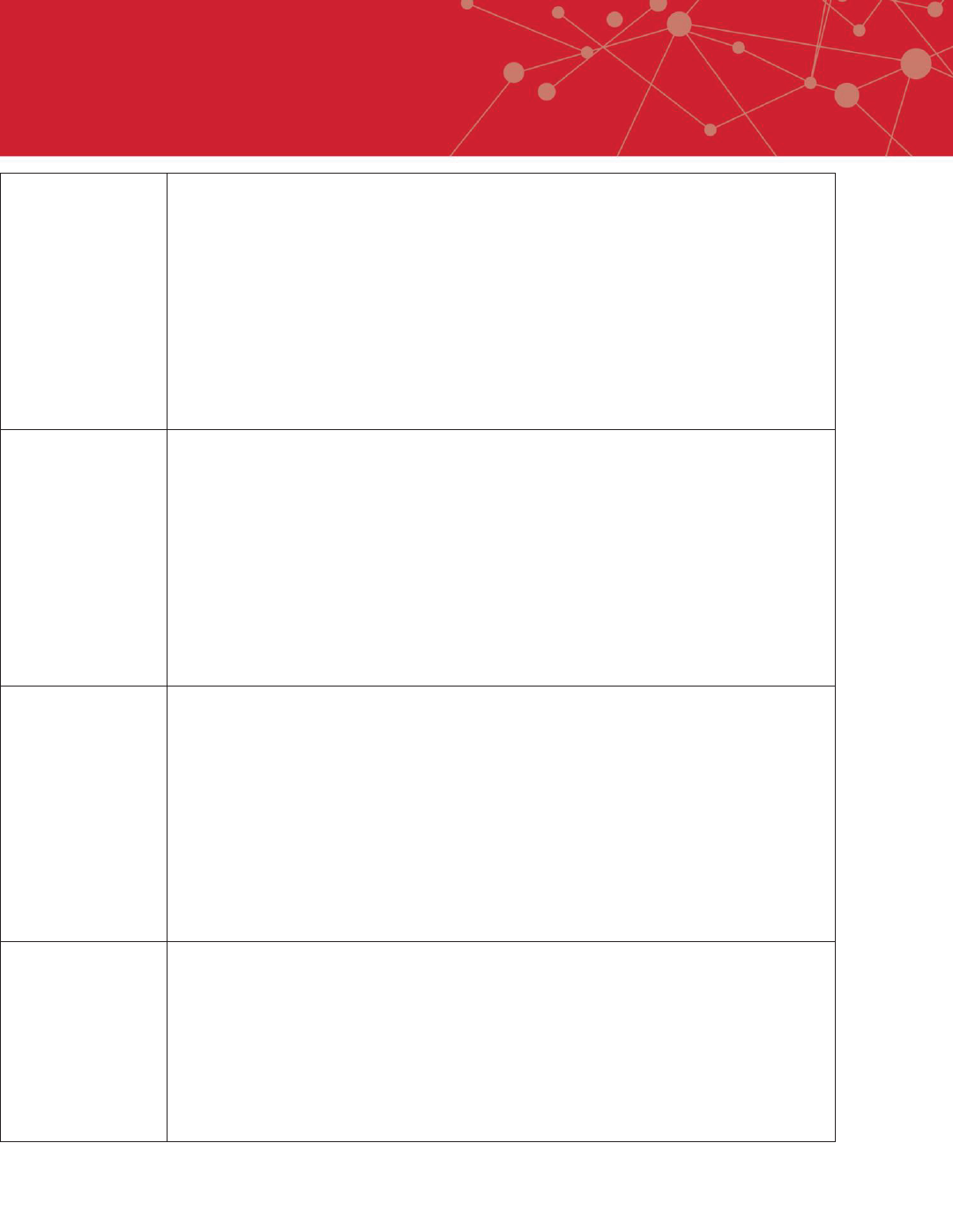
© Community Capacitation Center, Multnomah County Health Department, 2013. All rights reserved.
Blank SOAP Note
Subjective (S)
Objective (O)
Assessment (A)
Plan (P)

Documentation Skills for Community Health Workers
Acknowlegements
This curricula draws from and is adapted from other training curricula for peer
educators and community health workers, such as the Building Blocks to Peer Success
(https://ciswh.org/resources/HIV-peer-training-toolkit) and the Community Capacitation
Center, Multnomah County Health Department (https://multco.us/health/community-
health/community-capacitation-center)
Team
This project is/was supported by the Health Resources and Services Administration
(HRSA) of the U.S. Department of Health and Human Services (HHS) under grant
number U69HA30462 “Improving Access to Care: Using Community Health
Workers to Improve Linkage and Retention in HIV Care” ($2,000,000 for federal
funding). This information or content and conclusions are those of the author
and should not be construed as the official position or policy of, nor should any
endorsements be inferred by HRSA, HHS or the U.S. Government.
Suggested Citation:
Boston University Center for Innovation in Social Work & Health. (2019). A Training
Curriculum for Using Community Health Workers to Improve Linkage and Retention in
HIV Care. Retrieved from: http://ciswh.org/chw-curriculum
Serena Rajabiun
Alicia Downes
LaTrischa Miles
Beth Poteet
Precious Jackson
Simone Phillips
Maurice Evans
Jodi Davich
Rosalia Guerrero
Maria Campos Rojo
